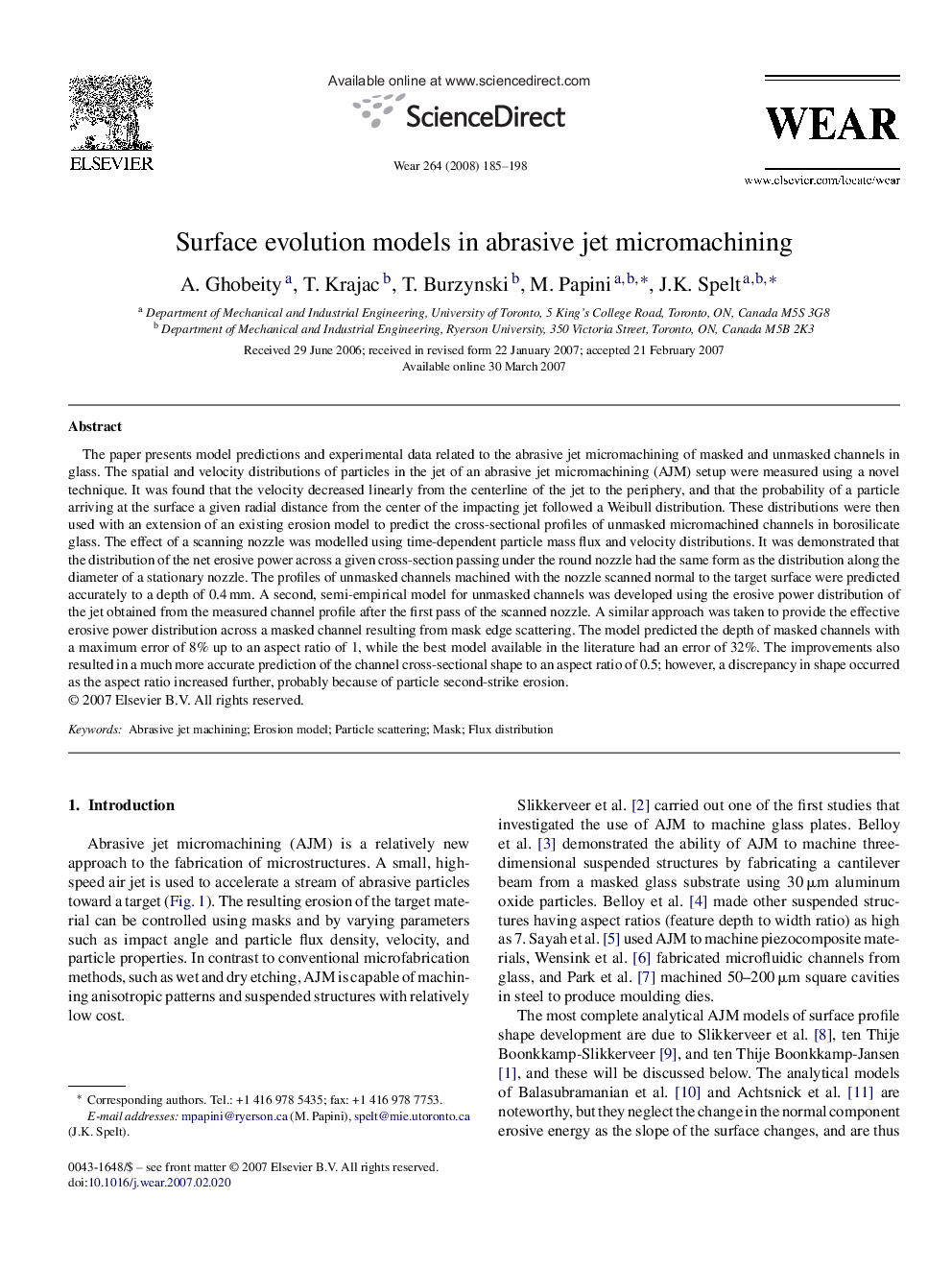| کد مقاله | کد نشریه | سال انتشار | مقاله انگلیسی | نسخه تمام متن |
|---|---|---|---|---|
| 619587 | 1455061 | 2008 | 14 صفحه PDF | دانلود رایگان |

The paper presents model predictions and experimental data related to the abrasive jet micromachining of masked and unmasked channels in glass. The spatial and velocity distributions of particles in the jet of an abrasive jet micromachining (AJM) setup were measured using a novel technique. It was found that the velocity decreased linearly from the centerline of the jet to the periphery, and that the probability of a particle arriving at the surface a given radial distance from the center of the impacting jet followed a Weibull distribution. These distributions were then used with an extension of an existing erosion model to predict the cross-sectional profiles of unmasked micromachined channels in borosilicate glass. The effect of a scanning nozzle was modelled using time-dependent particle mass flux and velocity distributions. It was demonstrated that the distribution of the net erosive power across a given cross-section passing under the round nozzle had the same form as the distribution along the diameter of a stationary nozzle. The profiles of unmasked channels machined with the nozzle scanned normal to the target surface were predicted accurately to a depth of 0.4 mm. A second, semi-empirical model for unmasked channels was developed using the erosive power distribution of the jet obtained from the measured channel profile after the first pass of the scanned nozzle. A similar approach was taken to provide the effective erosive power distribution across a masked channel resulting from mask edge scattering. The model predicted the depth of masked channels with a maximum error of 8% up to an aspect ratio of 1, while the best model available in the literature had an error of 32%. The improvements also resulted in a much more accurate prediction of the channel cross-sectional shape to an aspect ratio of 0.5; however, a discrepancy in shape occurred as the aspect ratio increased further, probably because of particle second-strike erosion.
Journal: Wear - Volume 264, Issues 3–4, 4 February 2008, Pages 185–198